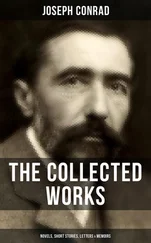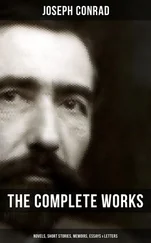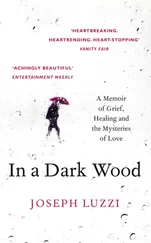Daily letters poured from the desperate pen of Huntley, who had heard that the Duke was considering sending his own plant collector to Calcutta. He assured the Duke that he was continuing to add rare and beautiful specimens to his collection, and railed that the £ 100 difference between the sum Paxton had offered and the sum he required was but a trifle to the great nobleman. He threw in his collection of cacti and other stove plants. Long letters also raced between the Duke in London and Paxton at Chatsworth, the Duke exhorting Paxton to clarify whether he thought the plants of sufficient value. Uncharacteristically, Paxton dithered. On the one hand he thought the collection superb. On the other, he was overwhelmed by the price, and felt Huntley to be mercenary. He applauded the intention behind maintaining the collection as a whole, but was equally clear that it contained plants that were not needed, so that ‘Mr Huntley may be given to understand that we shall chop and cut his collection to make a good one of our own and dispose of the rest for other plants.’ Finally he advised against the purchase.
This was all that was needed to help the Duke to a decision. If Paxton wanted the plants, hang the expense. So, without further delay, Huntley received his asking price of £ 500. With a mixture of concern and competitive glee, Paxton wrote ‘our collection of orchideae has now mounted completely to the top of the tree. I am fearful some of our neighbours will be a little jealous of our progress – the race will lay between Lord Fitzwilliam and Mr Bateman.’
It would take nearly a week to prepare the plants for their journey to their new home and a young gardener under Paxton, John Gibson, was sent to complete the task. In September, the erstwhile secretary of the Horticultural Society Gardens, John Lindley – now Professor of Botany at University College London and in the process of claiming his title as ‘the father of orchidology’ – had named an entire genus of plants Cavendishia , charming the Duke completely.
Since their trip to Paris together, the Duke was in the habit of summoning Paxton to London at a moment’s notice. Paxton was busier than he had ever been. He had monthly editions of two magazines to oversee, as well as their compilation into volume form at the end of each year, quite apart from the daily business and big schemes of Chatsworth. Unsurprisingly, his normally robust constitution succumbed to the increasing strain of his workload and he became bedridden with a sore throat and headache, although he managed to maintain a regular correspondence with the Duke in London about plans for Chatsworth and the continued planting of the arboretum.
The Duke’s reaction to his incapacitation substantiates the regard in which he held him: ‘I had rather all the plants were dead than have you ill,’ he wrote. Paxton and the Duke were both rare men and the regard in which they held each other – given the polarity of their stations – was becoming remarkable; they had become friends. The Duke’s sister, Harriet Countess Granville, noticed it and wrote to her brother about his decision to accept neither the offer of Lord Chamberlain again, nor that of Lord Lieutenant of Ireland, under Melbourne’s new Whig government. She imagined ‘you and Paxton, sitting under a red Rhododendron at Chatsworth, under the shade of palms and pines in your magnificent conservatory, with … no thought of your country’s weal and woe’.
In April 1834, Paxton finally relinquished his editorship of the Horticultural Register , citing extreme pressure of business which entirely deprived him of the leisure necessary to conduct the magazine along the lines to which he had been accustomed. Subscribers were assured that his advice would continue to enrich its pages, and a professional editor stepped in.
Later that year, when the Duke returned from the continent, he was again enraptured by all that Paxton was achieving, in particular with the stoves and plants in the kitchen garden. Hardly a day passed when he did not visit it, returning to note some new glory in his diary. The round of horticultural shows and visits to commercial nurseries continued and, at the end of November, Paxton was summoned to London, to visit the Chelsea Physic Garden, Knights’ and Loddiges’ nurseries, John Lindley and an assortment of private gardens. The Duke bought another fine orchid from a garden in Tooting and together they did what they both loved: hatched grander and grander schemes to enrich the gardens and grounds at Chatsworth.
At the beginning of December, the Duke hurried Paxton off on an impromptu garden tour, or ‘norticultural tower’ as Paxton called it *At Dropmore the pines remained glorious, at Highclere the grounds quite beautiful. They travelled west to Stonehenge and Bath, got up in the wind and rain to see Wilton’s fine cedars, the striking ruins of Fonthill Abbey and the magnificence of Longleat. It was freezing, and although Paxton was travelling on the box with the coachman, his delight in all he saw remained boyish. Of Stonehenge he wrote to Sarah ‘I have never seen anything so wonderful’. They took in the ruins of Thornbury Castle and Berkeley Castle, ‘a very curious mixture of antiquity and vulgarity’, and noted Nash’s perfectly beautiful cottages in Blaise Hamlet. They took the hot waters at Bath and journeyed on to Blenheim, where it was so cold that only Paxton went out into the gardens. He was exhausted by all the sights, the grand houses and their gardens and, since the Duke was travelling without entourage, further strained by arranging everything for His Grace. He wrote to his wife that he was being whisked ‘hither and thither and Lord knows where, that the Duke’s plans were up in the air and there was even talk of going to Paris.
Paxton’s letters were torture to Sarah whose return mail was chasing him around the country, never quite reaching him before he moved off again. All was far from well at home – measles in the village had spread to the children and William, in particular, was coughing violently. Her letters are discouraged, frustrated and frantic. Longing to hear from his wife, and seeing that a letter from her was among the Duke’s parcel of letters, Paxton split open the parcel and retrieved his letter, only to read of the suffering of his children. Noticing his distress, the Duke asked what was the matter, but Paxton dared not admit that he had broken a cardinal rule of the house with regard to the letter bag, that Sarah had written, and that their son was sick. He was beside himself with suspense:
I am now most seriously afraid that it will go hard with poor William, the bodily suffering that poor child has endured makes me shudder to think of – I never wanted to do anything so much in my life as I do to come home at this time … don’t deceive me if you think there is danger, let me know and I will start out immediately … all I can think of is my dear, dear children – what a melancholy thing it would be if the poor child was to die and me not see him again … but from the first moment I had forebodings for poor Will … Do all you can for our dear children, and kiss them a thousand times for me.
He suffered for two days before another letter from Sarah freed him from his torture. It was not good news. On Friday, 11 December, the Duke wrote in his diary, ‘poor Paxton went off to Chatsworth, hearing of the dangerous illness of his boy’. Paxton must, therefore, have been at home when his only son, William, died five days later, just short of his sixth birthday. The Chatsworth household accounts for that week show the making of ‘a lead coffin for young Paxton’ and for soldering it up. Paxton only twice referred to the boy in any of his surviving letters, when as an old man, his memory was stabbed by the resemblance of two of his grandsons to his own lost boy.
Читать дальше











